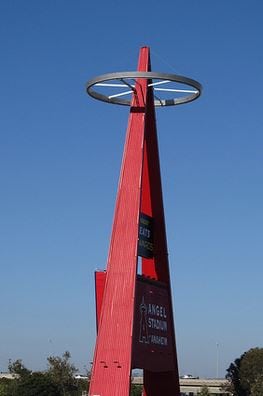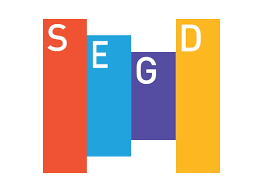Secrets of Pylon Signage
Architectural Signage, Design/Build, Exterior Signage, Others, Signage TipsIt’s hard to drive or walk far in today’s built-up areas without encountering a pylon sign, sometimes called a pole sign or a roadside sign.
As the name implies, this is single- or double-sided signage supported above ground level on some kind of slim vertical support. Along highways, pylon signage can tower 200 feet or even higher. In urban areas, they’re likely to top out at 30 feet or so, the better to be visible to foot traffic and to link the sign’s messaging more closely to a particular piece of real estate.
The pylon sign itself usually consists of an illuminated sign cabinet supported by one or two unembellished poles, which may be square, round, or of an interesting architectural shape and design.
Compared to most other types of highly visible signage, pylon signs tends to be less expensive and easier to install. However, they usually require a large foundation structure with underground electrical connections to power their illumination. In recent years, solar-powered options are becoming more commonplace.
Because the supporting pylon(s) can be quite strong, the signage itself can be extremely large and shaped in an interesting way, attracting more positive attention from passers-by and ensuring visibility from remarkable distances.
A good example of pylong signage is the “Big A” at Angel Stadium, south of Los Angeles, where the Los Angeles Angels of Anaheim play baseball (see accompanying photo). The twin pylons that form a giant letter “A” tower 234 feet tall and weigh more than 200 tons, so large that this sign has been called Anaheim’s “Little Eiffel Tower.” Visible for miles, the “Big A” has become a natural reference point for tailgate partiers at the stadium’s games and concerts, for meet-ups of all kinds, for shelter from sun and rain, and for finding your way amid the stadium’s vast parking lots.
Advantages of Pylon Signs
Among the advantages of pylon signage is that it does not need an existing structure for support. This allows the signage to be separated from the building(s) it advertises – closer to the street, for example, taller, and generally more widely and readily visible than if it had to be hung on a wall, like most other types of signs. One result is that pylon signage can generate a larger number of exposures than if the same signage were located more conventionally.
Because the pylon sign is basically “freestanding,” it affords designers great latitude in selecting durable, decorative shapes and accents, vibrant colors, dramatic architectural elements, and other unique, memorable features.
So it should be no surprise that pylon signage continues to earn its place within the ever-expanding portfolio of signage technology, and remains an essential part of the work done by the world’s most accomplished sign designers and fabricators.
If you’ve seen any pylon signs you love, or would like us to create one for you, please give us a call to talk about it at 978-228-3772.

